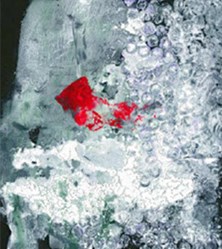Early pregnancy loss and stillbirth
No matter how, where, or when pregnancy or infant loss occurs, it is significant. You may have had a miscarriage or the baby may have died before birth.

The loss of a pregnancy results in multiple losses: the loss of a baby, and the loss of your anticipated parenthood. Some parents also feel a loss of sense of self and their hopes and dreams for the future. The mother may experience a significant loss of self-esteem because of the inability to rely on her body. For many women, a perinatal loss is a traumatic life experience that can affect them for a long time.
Miscarriage
When a pregnancy ends early, within the first 20 weeks of gestation, it is considered a miscarriage. It is estimated that between 15 to 25 percent of all known pregnancies will end in miscarriage.
Responses to a miscarriage can vary from feeling devastated to having a sense of relief. For some, having a miscarriage is an accepted life event, a pregnancy that somehow was not meant to be. For others, a miscarriage is the loss of a wished-for child, filled with dreams and hopes for parenthood. The attachment to a baby is real and often exists long before conception.
Even in our present day, the topic of miscarriage is often shrouded in silence. Because of this, miscarriage can be an isolating experience for many parents who grieve alone. Despite being a medically common experience, our society struggles to talk about early pregnancy loss.
Because miscarriage happens in the first 19 weeks of pregnancy, you may not have announced it to family and friends. This makes it more difficult to share your grief. Sharing your grief can be healing for you and may inspire others who grieve in silence to do the same. Many parents who have experienced a miscarriage have found meaningful ways to honour their baby.
You may have received the heartbreaking news that your baby has died while inside of you. Stillbirth is defined as the loss of a baby before or during delivery, after 20 weeks of pregnancy. The death of a baby due to stillbirth often comes as a devastating and debilitating shock, but sometimes you may suspect that your baby has died because you no longer feel the baby move or you no longer feel pregnant.
Parents of a stillborn baby have much to grieve: not seeing their baby alive, missing out on their baby’s “first” moments after birth, as well as the opportunity to see and parent their baby through life and death.
Even if your baby passed away before birth, it can be comforting to hold, touch, bathe and dress your baby. You can make hand and foot molds; take photos; create legacies with hand and footprints and perhaps hold a ceremony to honour or bless your baby as you prepare to say goodbye.
Many parents who have experienced stillbirth have found meaningful ways to honour their baby as they begin their journey of emotional and spiritual healing.
In the first days and weeks, you may have a range of intense feelings and thoughts. In the earliest days or at certain moments, you may feel numb. Your grief is likely to affect you on many levels. For example, you may have trouble sleeping or want to sleep all the time; you may feel hungry or have little appetite. You may be unable to stop crying, or not cry at all. You may be replaying your experience of the loss over and over. You may think, “I can’t believe this is my life”.
What may help
Keep in mind that whatever thoughts and feelings you may have, they are normal, as are any “what if” questions. It’s important that you allow your grief to include all of these, no matter how painful, and to find other people who will support you as you process what has happened.
Remind yourself that you have been through an enormously difficult experience. You’ll also need time to heal physically and to find out how best to care for yourself. Pay attention to your body. Don’t hesitate to contact your healthcare provider about milk supply, wound healing, and pelvic health, etc.
Support from family and friends:
- Think about what might and might not be helpful to you at this time, and who can best support you. This might be one or two trusted family members or friends who are able to listen and be with you as needed.
- Consider asking someone to stay in touch by checking in with you on a regular basis, even if you sometimes don’t feel like talking or having company.
If you work outside the home:
- Your health care provider can likely provide a letter to your employer supporting a leave of absence.
- Ask your employer or healthcare provider for information, or ask a friend or family member to inquire about leave or other benefits available to you through your provincial or territorial government or Employment Insurance (EI) benefits.
- Your co-workers can support you best when they know what you need. Whether or not they knew that you were pregnant, you can decide what you would like your workplace to know and how/whether you wish to be approached upon your return. For example, you may want them to say nothing, or you may prefer an acknowledgement but no uninvited conversation. You may feel okay about more open discussion but want to provide them with a “helpful vs. unhelpful things to say” list.
Neighbours and acquaintances:
- If people living near you were aware of your pregnancy or witnessed emergency services visiting your home, you may want to prepare yourself for questions or expressions of concern.
- If you have a trusted friend in your community, consider asking them to act as your spokesperson until you feel ready to speak with people yourself.
Print resources
- Loving Your Baby… A Gentle and Practical Guide to Parenting Through Miscarriage, Stillbirth and Infant Death, 2nd edition (2016) by Shari Morash
- Empty Cradle, Broken Heart: Surviving the Death of Your Baby (1996) by Deborah L. Davis
- Waiting with Gabriel: A Story of Cherishing a Baby's Brief Life (2008) by Amy Kuebelbeck
Additional resources
- MyGrief.ca/PAIL – Pregnancy and Infant Loss Series on MyGrief.ca












